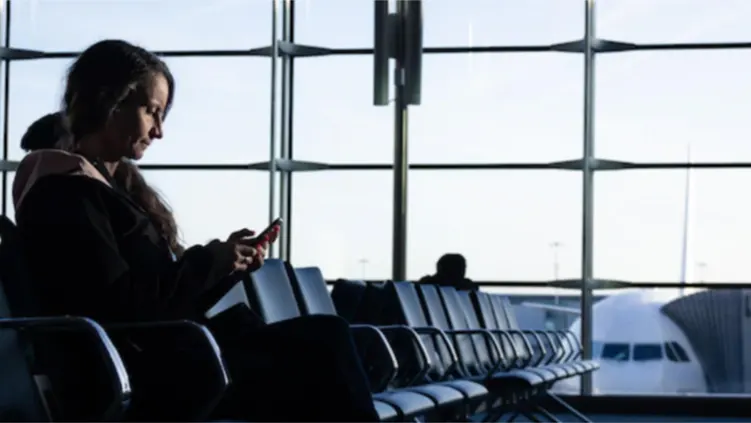Imagine yourself at the airport. You have passed security and are browsing the duty-free aisles while waiting for your gate number. Suddenly, your gate is announced. You grab your bags and head straight to the gate. A familiar image, is it not?
When gates are announced at airports around the world, travellers, who may otherwise have shopped, immediately pick up their bags and head to the gate – where they wait for half an hour or more before actual boarding takes place. We at Simtex call this The Dreadful 30 Minutes.
During the Dreadful 30 Minutes, nothing is happening. There is a massive loss of potential revenue, which is devastating for airports and airport retailers. Through conversations we have had with several airlines and airports, it is clear that this period of time is nothing but a waste.
But this problem also presents an opportunity. What almost every traveller has in common during the Dreadful 30 Minutes is that they are spending this time browsing on their mobile phones instead of browsing products in airport shops.
We at Simtex believe that rather than trying to change this behaviour, we can adapt to it.
In recent years, there has been a large shift towards the use of e-commerce platforms for airports. As of May, the global online travel market was valued at $433.2B, with online sales in the travel and tourism industry making up 66% of total sales. This percentage shows just how prevalent e-commerce has become. Everything is going digital.
We see a chance to take advantage of this trend. The Dreadful 30 Minutes presents an opportunity to target travellers with ancillary products that are most suitable to buy before takeoff: destination products. However, most travellers will already have booked their rental cars, hotels, and airport transfers. One destination product they probably haven’t bought yet is an eSIM.
We believe the eSIM is the product with the potential to revolutionise this period of dead time and transform the Dreadful 30 Minutes into something great.
This is particularly so, given the advanced knowledge that airports and airlines have about gate numbers. Each gate is scheduled, meaning airports and airlines know which gate their planes are arriving at and from which gate they will depart. They can leverage this knowledge by targeting travellers with personalised ads for eSIM packages according to their destination at every gate, for example, through signs or (digital) banners containing QR codes or by sending push notifications to travellers who have provided their telephone numbers.
The ads would serve as a reminder for travellers who haven’t secured data at their destination to do so before they take off, to allow them to connect immediately upon landing. They could also describe the simple steps needed to purchase and activate an eSIM, which we explained in our previous article: “eSIM as a Technology”, making travellers more inclined to follow through with the process. Adding this service would be easy to implement and would provide additional ancillary revenue for airports and airlines at a low cost.
The Dreadful 30 Minutes may currently be a waste for many businesses, but with the eSim, we can change that.



